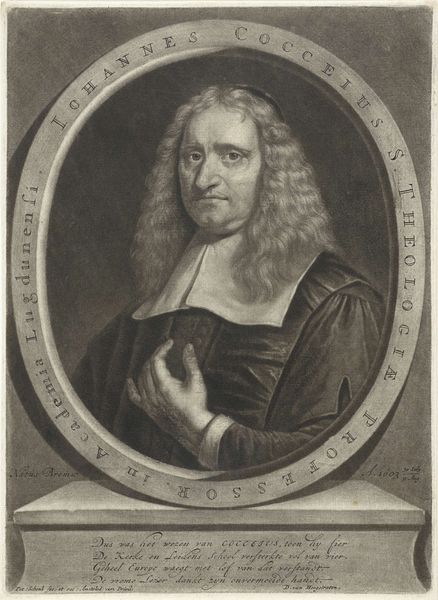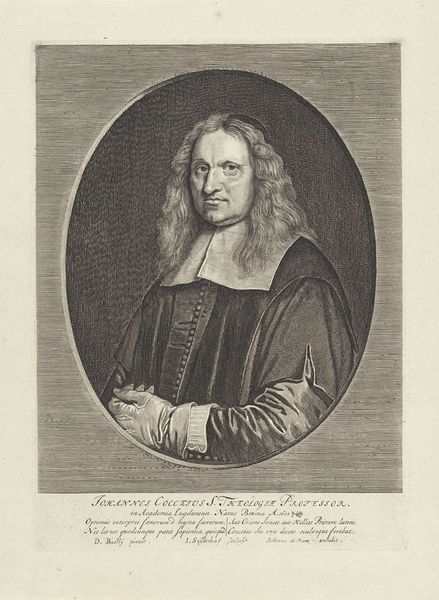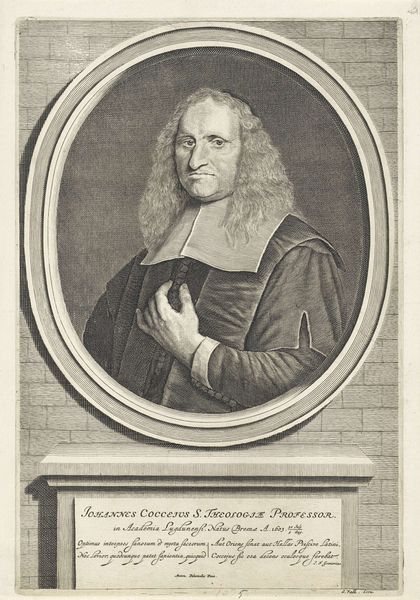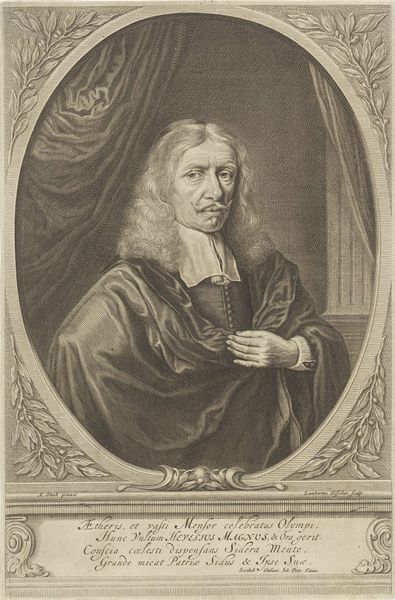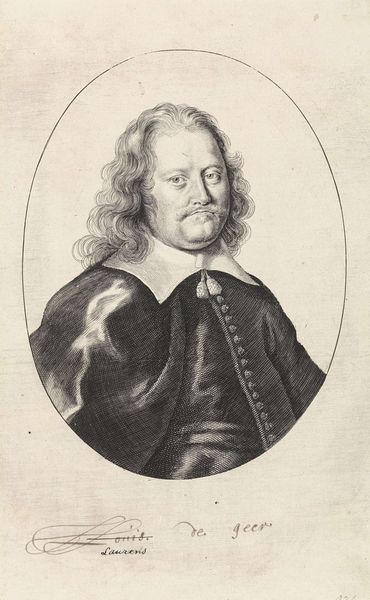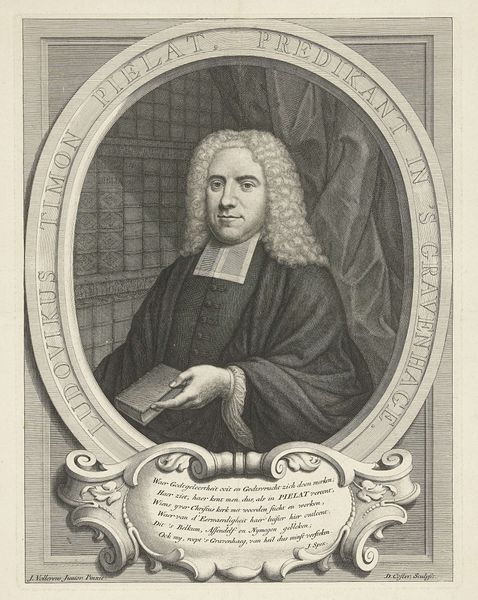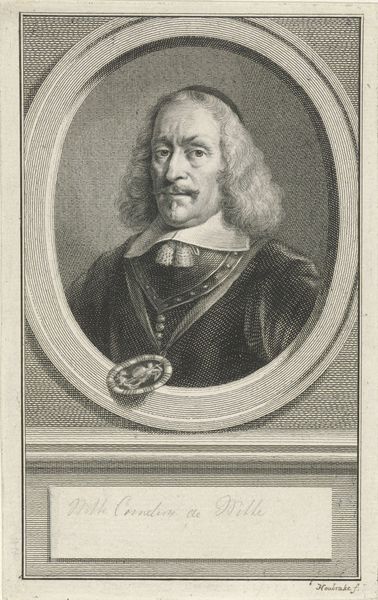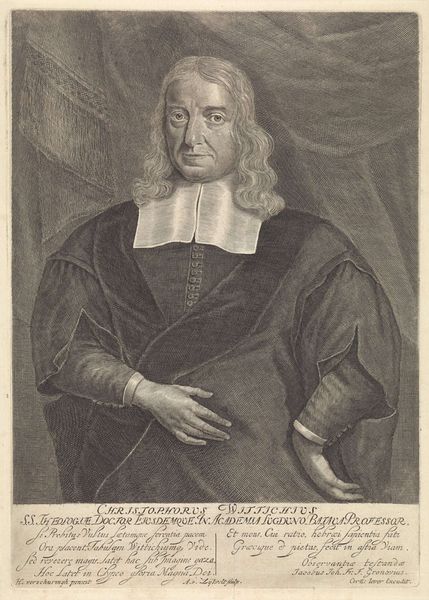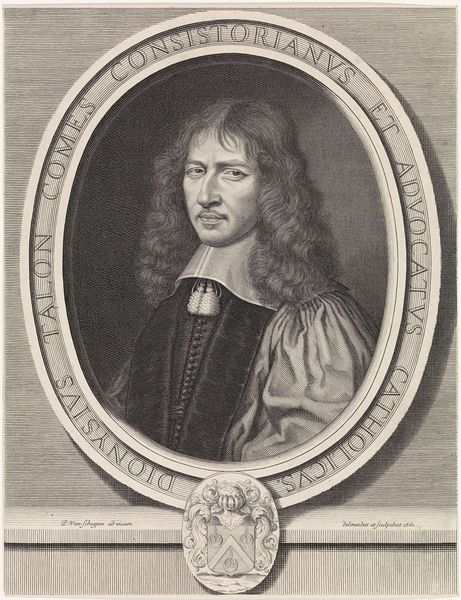
engraving
#
portrait
#
baroque
#
portrait image
#
dutch-golden-age
#
historical photography
#
history-painting
#
engraving
Dimensions: height 303 mm, width 202 mm
Copyright: Rijks Museum: Open Domain
Editor: Here we have a fascinating engraving, "Portret van Johannes Cocceius," created by Willem de Broen before 1748. The details achieved in this Baroque portrait are remarkable. It feels incredibly formal. How should we interpret its place in art history? Curator: It's essential to consider this engraving within the context of 18th-century Dutch society and its institutional frameworks. The subject, Johannes Cocceius, was a prominent theologian. How do you think the choice of engraving as a medium and its display context might have influenced its reception? Editor: I hadn't considered that! Engravings are reproducible; perhaps it allowed for broader distribution and accessibility of his image and ideas? Curator: Precisely. Portraits, particularly engravings of theologians and scholars, often played a vital role in constructing public figures and reinforcing specific ideological viewpoints within intellectual circles. Notice the Latin inscription and the level of detail. What message was the artist and, potentially, his patrons, hoping to convey? Editor: Perhaps they intended to convey Cocceius's intellect and standing to those who bought it. It acted almost like a promotional piece? Curator: That’s an insightful observation. Such portraits became tools in shaping public memory and discourse surrounding influential individuals. Now, think about who commissioned the piece and its place within a gallery collection, what does that say about it? Editor: The engraving demonstrates how art can serve as a vehicle for power dynamics and ideological messaging. Thinking about its historical role makes it more impressive! Curator: Agreed. This work underlines the critical relationship between art, social context, and the public sphere.
Comments
No comments
Be the first to comment and join the conversation on the ultimate creative platform.
